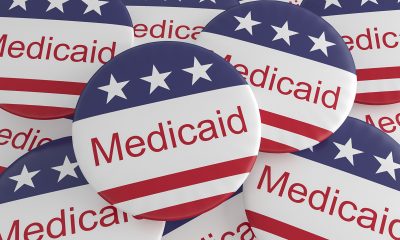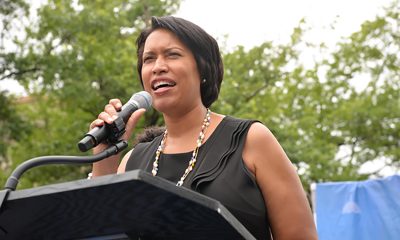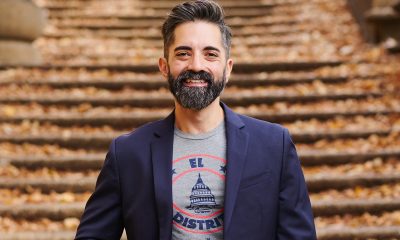Opinions
LGBTQIA disparities amid COVID-19
Pandemic has disproportionately impacted vulnerable groups

The COVID-19 pandemic has highlighted the importance of meeting the needs of diverse communities and minorities when facing emergencies such as COVID-19. But more importantly, it highlighted their vulnerability, since they are considered much more prone populations. COVID-19 has made it even more evident the disproportionate burden vulnerable populations bear and the weakness of our health system.
Minorities who are members of racial/ethnic groups are disproportionately affected and often exposed to higher illness rates and have substantially higher mortality and morbidity rates than the general population. For example, people vulnerable to HIV infection usually belong to socially, economically disadvantaged and discriminated groups. The Human Rights Campaign presented an investigative report on how the community faces unique challenges due to their economic situations and access to healthcare. According to HRC, LGBTQIA Americans are more likely than the general population to live in poverty and lack access to adequate health care, paid sick leave and basic needs during the pandemic. The Centers for Disease Control and Prevention states in one of its reports that the LGBTQIA community experiences stigma and discrimination in their lives that “… can increase vulnerabilities to illness and limit the means to achieving optimal health and well-being…” For example, discrimination and violence against LGBTQIA persons have been associated with high rates of psychiatric disorders, substance abuse, suicide and have long-lasting effects on the individuals. Furthermore, LGBTQIA mental health and personal safety are also affected when they go through the process of personal, family and social acceptance of their sexual orientation, gender identity and gender expression.
According to the Williams Institute, the leading research center on rights based on sexual orientation and gender identity, one in 10 LGBTQIA people is unemployed and more likely to live in poverty than heterosexual people, so they cannot always pay for proper medical care or preventive health measures. Also, approximately one in five LGBTQ + adults in the United States (22 percent) lives below the poverty line, compared to an estimated 16 percent poverty rate among heterosexuals. This data is much worse when we look closely at the trans population with 29 percent and LGBTQIA Latinos with 45 percent. These disparities are even more evident when we see that 17 percent of LGBTQIA adults do not have any medical health coverage compared to the 12 percent of the heterosexual population. That 17 percent increases with the LGBTQIA Black adults with 23 percent, trans adults with 22 percent, and trans Black adults with 32 percent who do not have any health coverage, compared to 12 percent of the heterosexual population that does not possess health coverage. The Office of Disease Prevention and Health Promotion statistics reflect that the LGBTQIA community is more likely to attempt suicide, be overweight or obese, have mental health problems, and less likely to receive cancer treatment.
According to several health organizations led by the National LGBT Cancer Network, the LGBTQIA population still faces great social and economic disparities compared to the heterosexual community, so they are more likely to get infected by COVID-19. The report summarizes how COVID-19 negatively affects the lives and livelihoods of the LGBTQIA community at disproportionate levels. The older generations of LGBTQIA encounter additional health barriers in the face of COVID-19 due to isolation, discrimination in the provision of services, and the lack of competent social services. The LGBTQIA community uses tobacco at rates that are 50 percent higher than the general population, and COVID-19 is a respiratory illness that has proven particularly harmful to smokers. In addition, the LGBTQIA population has higher rates of HIV and cancer, which means a more significant number may have compromised immune systems, leaving us more vulnerable to COVID-19 infections. LGBTQIA communities also face additional risks related to conditions that are often associated with complications from COVID-19. One in five LGBTQIA adults aged 50 and above has diabetes, a factor that raises the risk of complications for individuals diagnosed with COVID-19.
A Kaiser Family Foundation research finds that a larger share of LGBTQIA adults has experienced COVID-19 era job loss than heterosexuals adults (56 percent vs. 44 percent). Furthermore, the limited anti-discrimination protections from the LGBTQIA community also make them more vulnerable to joblessness due to an economic downturn resulting from COVID-19’s spread. Since February 2020, 56 percent of LGBTQIA people report that they or another adult in their household have lost a job, been placed on furloughs, or had their income or hours reduced because of the coronavirus outbreak, compared to 44 percent of non-LGBTQIA people.
In addition, recent data show that LGBTQIA respondents were more likely than non-LGBTQIA respondents to be laid off (12.4 percent vs. 7.8 percent) or furloughed from their jobs (14.1 percent vs. 9.7 percent), report problems affording essential household goods (23.5 percent vs. 16.8 percent), and report having problems paying their rent or mortgage (19.9 percent v. 11.7 percent). The research also shows that three-fourths of LGBTQIA people (74 percent) say worry and stress from the pandemic have had a negative impact on their mental health, compared to 49 percent of those, not LGBTQIA. A recent study from the William Institute also found that LGBTQIA people of color were twice as likely as white non-LGBTQIA people to test positive for COVID-19. According to the Williams Institute, the Coronavirus Aid, Relief, and Economic Security Act (CARES Act) represented a direct benefit for the LGBTQIA community amid the pandemic. However, LGBT people have still experienced the COVID-19 pandemic differently than heterosexuals, including being harder hit in some areas. The challenges presented by COVID-19 have exacerbated the stigma and discrimination to access to healthcare, social services, and basic legal protections for the LGBTQIA community. It is not the first time the LGBTQIA confronts the stigma and discrimination amid a pandemic. Since the HIV/AIDS pandemic from the 80s until now, the LGBTQIA community has developed an extraordinary resilience over decades, and pushing back against stigma and making claims for basic human dignity and equality
The World Health Organization recognizes that “vulnerable and marginalized groups in societies often have to bear an excessive share of health problems and are less likely to enjoy the right to health…” For this reason, the WHO recognizes the need for more aggressive regulations and laws that promote equality in services for these vulnerable groups to eliminate those current statutes that aggravate marginalization and hinder gradually, and even more so, access to health services, prevention, and care. National policies and state regulations must address the needs of LGBTQIA populations, with particular attention to black LGBTQIA and the absence of standardized protections against discrimination by healthcare providers. Although there have been substantial advances for the LGBTQIA population over the last decade, legal protections remain uneven, including those jurisdictions that do not expressly prohibit discrimination based on sexual orientation, gender identity, or/and gender expression. Eliminating LGBTQIA health disparities and enhancing efforts to improve their health are necessary to reduce disparities and increase longevity. Furthermore, under the context of COVID-19, researchers have found that the intersection of race with sexual orientation and gender identity is essential to understand pandemic’s impact. For example, data collection efforts related to COVID-19 must immediately add sexual orientation and gender identity questions. Collecting sexual orientation and gender identity data will improve knowledge about disparities from sexual minorities, enhance cultural competence among health providers, help implement anti-bullying policies, and reduce suicide and homelessness among youth, among others.

I hope you have a great Thanksgiving and can enjoy it with family and friends and that you have things you can be thankful for this past year. That you have your health. Now here is the column I would have liked to share with you this Thanksgiving:
To all my friends and family. This year I am thankful the felon has left the White House. It feels we can all finally breath again. I am so happy his idea of a ballroom at the White House was a joke, and we can once again walk in Jackie Kennedy’s rose garden, and visit the beautiful East Wing. I am thankful the felon’s personal Goebbels, Stephen Miller, lost his job when the reality that he was a fascist was too much to take. It was wonderful to see the Supreme Court wake up and do their job once again. They stopped drinking the MAGA Kool-Aid and voided all the executive orders calling on museums to hide the history of Black Americans, women, and the LGBTQ community. They told the president he didn’t have the right to place tariffs, and that he couldn’t fire legally appointed members of commissions under the rubric of Congress’s control.
Then I am thankful the Congress began to do its job. That so many Republicans grew a set of balls and decided to challenge Speaker Mike ‘sycophant’ Johnson, reminding him they were an independent part of government, and didn’t need to rubber stamp everything the felon wanted. I was thankful to see them extend the SNAP program indefinitely, and the same with the tax credits for the ACA, agreeing to include these important programs in next year’s budget. Then they went further, and paid for the programs, by rescinding all the tax benefits they had given to the wealthy, and corporations, in the felon’s big ugly bill. Finally realizing it is the poor and middle class who they had to help if the country was to move forward. Then I can’t thank them enough for finally passing the Equality Act, and doing it with a veto proof majority, so the felon had to sign it, before he left office. They did the same for the Choice Act, and the Voting Rights Act. It was a glorious year with so much to be thankful for.
Then I am so thankful Congress finally stood up to the felon and said he couldn’t start wars without their approval, and the Supreme Court ruled they were right. That attacking Venezuela was not something he had the right to do. Then the final thing the court did this year I am thankful for, is they actually modified their ruling on presidential immunity, and said the felon’s grifting was not covered, as under their decision that was private, and not done in his role as president. Again, can’t thank them enough for waking up and doing that.
Then there is even more I am thankful for this year. It was so nice to see Tesla collapse, and Musk lose his trillion-dollar salary. The people finally woke up to him and insisted Congress mandate the satellite system he built, basically with money from the government, was actually owned by the government, and he could no longer control who can use it. It was determined he alone would not be able to tell Ukraine whether or not they can use it in their war defending against the Russian invasion. Then I am so thankful Congress went even further, and approved the funds needed by the Ukrainians for long-range missiles, and a missile defense system, accepting Ukraine was actually fighting a proxy war for the West, and Ukraine winning that war would help keep our own men and women off the battlefield.
And speaking of our military, I thank Congress for lifting the ban on transgender persons in the military, and honoring their service, along with the service of women, Black service members, all members of the LGBTQ community, and all minorities. It was fun to see Pete Hegseth being led out of the Pentagon, and being reminded he wasn’t the Secretary of War. There is no Department of War, it is still the Department of Defense, with congressional oversight. Again, so many things to be thankful for this past year. It seemed like my heart runneth over.
Then my alarm went off and I woke up from my big beautiful dream, only to realize I was still living in the Trumpian nightmare.
Peter Rosenstein is a longtime LGBTQ rights and Democratic Party activist.
Commentary
Elusive safety: what new global data reveals about gender, violence, and erasure
Movements against gender equality, lack of human rights data contributing factors.
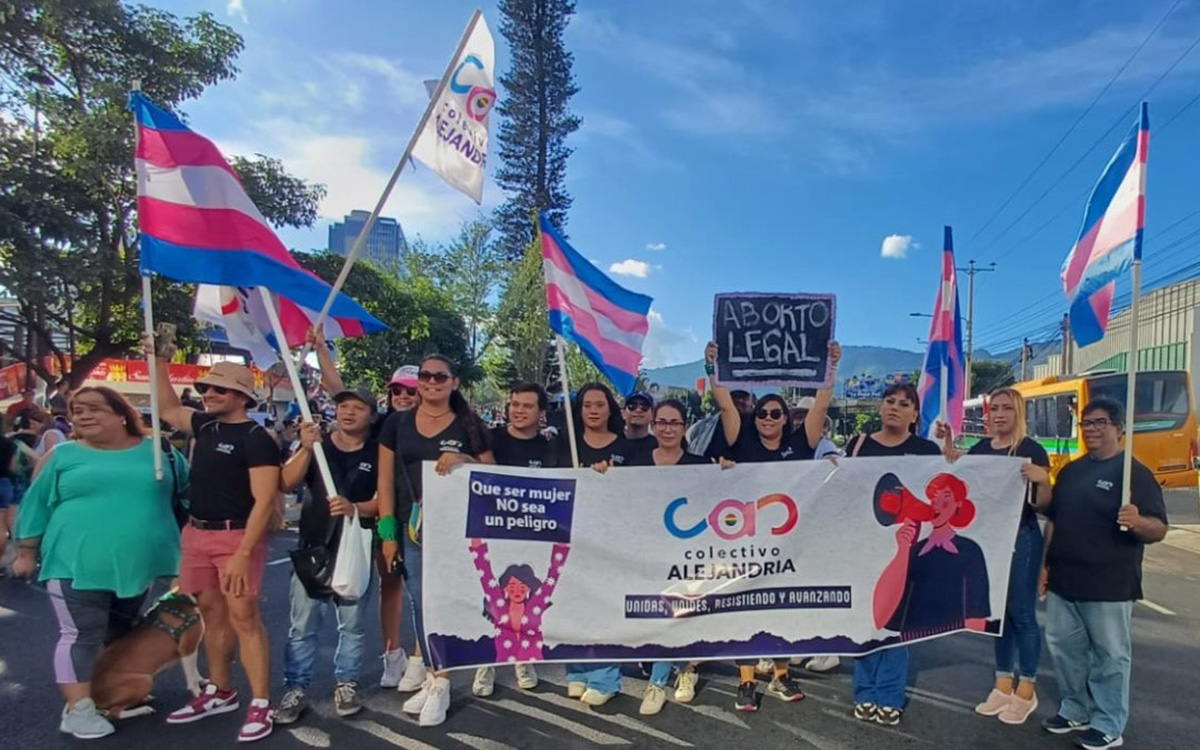
“My identity could be revealed, people can say whatever they want [online] without consequences. [Hormone replacement therapy] is illegal here so I’m just waiting to find a way to get out of here.”
-Anonymous respondent to the 2024 F&M Global Barometers LGBTQI+ Perception Index from Iraq, self-identified as a transgender woman and lesbian
As the campaign for 16 Days Against Gender-Based Violence begins, it is a reminder that gender-based violence (GBV) — both on– and offline — not only impacts women and girls but everyone who has been harmed or abused because of their gender or perceived gender. New research from the Franklin & Marshall (F&M) Global Barometers and its report A Growing Backlash: Quantifying the Experiences of LGBTQI+ People, 2022-2024 starkly show trends of declining safety among LGBTQI+ persons around the world.
This erosion of safety is accelerated by movements against gender equality and the disappearance of credible human rights data and reporting. The fight against GBV means understanding all people’s lived realities, including those of LGBTQI+ people, alongside the rights we continue to fight for.
We partnered together while at USAID and Franklin & Marshall College to expand the research and evidence base to better understand GBV against LGBTQI+ persons through the F&M Global Barometers. The collection of barometers tracks the legal rights and lived experiences of LGBTQI+ persons from 204 countries and territories from 2011 to the present. With more than a decade of data, it allows us to see how rights have progressed and receded as well as the gaps between legal protections and lived experiences of discrimination and violence.
This year’s data reveals alarming trends that highlight how fear and violence are, at its root, gendered phenomena that affect anyone who transgresses traditional gender norms.
LGBTQI+ people feel less safe
Nearly two-thirds of countries experienced a decline in their score on the F&M Global Barometers LGBTQI+ Perception Index (GBPI) from 2022-2024. This represents a five percent drop in global safety scores in just two years. With almost 70 percent of countries receiving an “F” grade on the GBPI, this suggests a global crisis in actual human rights protections for LGBTQI+ people.
Backsliding on LGBTQI+ human rights is happening everywhere, even in politically stable, established democracies with human rights protections for LGBTQI+ people. Countries in Western Europe and the Americas experienced the greatest negative GBPI score changes globally, 74 and 67 percent, respectively. Transgender people globally reported the highest likelihood of violence, while trans women and intersex people reported the highest levels of feeling very unsafe or unsafe simply because of who they are.
Taboo of gender equality
Before this current administration dismantled USAID, I helped create an LGBTQI+ inclusive whole-of-government strategy to prevent and respond to GBV that highlighted the unique forms of GBV against LGBTQI+ persons. This included so-called ‘corrective’ rape related to actual or perceived sexual orientation, gender identity, or expression” and so-called ‘conversion’ therapy practices that seek to change or suppress a person’s gender identity or expression, sexual orientation, or sex characteristics. These efforts helped connect the dots in understanding that LGBTQI+ violence is rooted in the same systems of inequality and power imbalances as the broader spectrum of GBV against women and girls.
Losing data and accountability
Data that helps better understand GBV against LGBTQI+ persons is also disappearing. Again, the dismantling of USAID meant a treasure trove of research and reports on LGBTQI+ rights have been lost. Earlier this year, the US Department of State removed LGBTQI+ reporting from its annual Human Rights Reports. These played a critical role in providing credible sources for civil society, researchers, and policymakers to track abuses and advocate for change.
If violence isn’t documented, it’s easier for governments to deny it even exists and harder for us to hold governments accountable. Yet when systems of accountability work, governments and civil society can utilize data in international forums like the UN Universal Periodic Review, the Convention on the Elimination of All Forms of Discrimination Against Women, and the Sustainable Development Goals to assess progress and compliance and call for governments to improve protections.
All may not be lost if other countries and donors fill the void by supporting independent data collection and reporting efforts like the F&M Global Barometers and other academic and civil society monitoring. Such efforts are essential to the fight against GBV: The data helps show that the path toward safety, equality, and justice is within our reach if we’re unafraid of truth and visibility of those most marginalized and impacted.
Jay Gilliam (he/him/his) was the Senior LGBTQI+ Coordinator at USAID and is a member of the Global Outreach Advisory Council of the F&M Global Barometers.
Susan Dicklitch-Nelson (she/her/hers) is the founder of the F&M Global Barometers and Professor of Government at Franklin & Marshall College.
Commentary
Second ‘lavender scare’ is harming our veterans. We know how to fix it
Out in National Security has built Trans Veterans State and Local Policy Toolkit
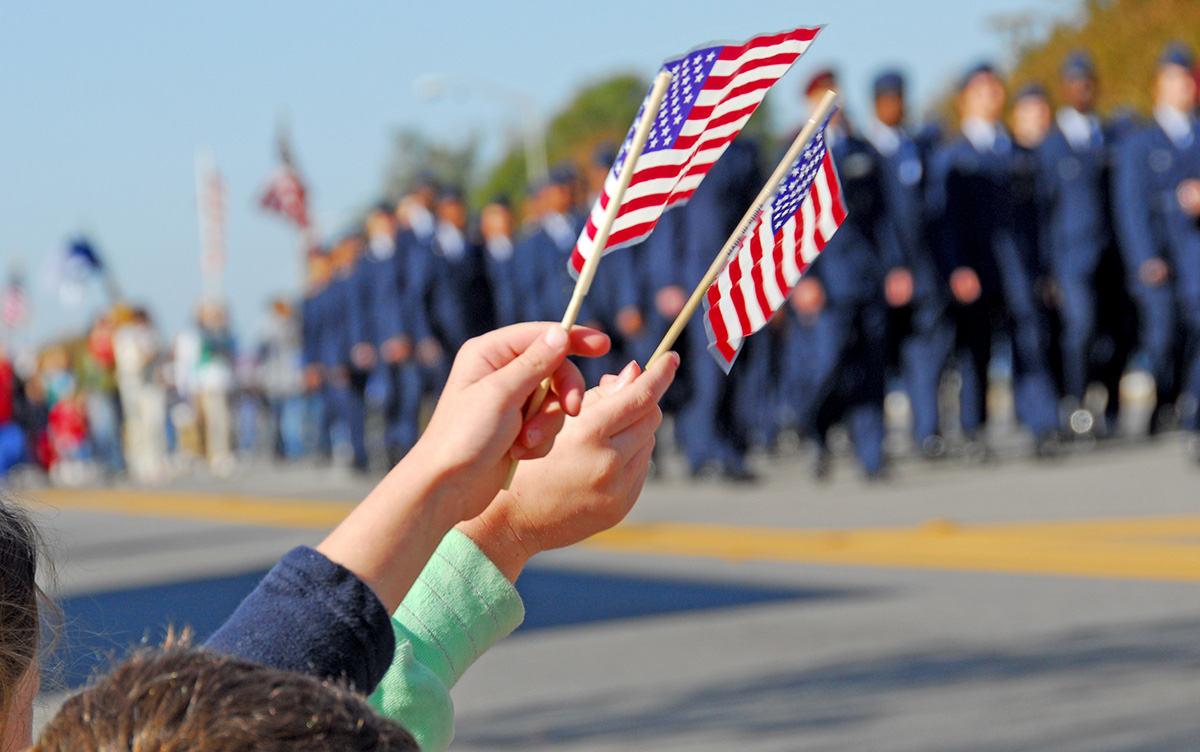
Seventy years after the first “lavender scare” drove LGBTQ Americans from public service, a second version is taking shape. Executive directives and administrative reviews have targeted transgender servicemembers and veterans, producing a new wave of quiet separations and lost benefits.
The policy language is technical, but the result is personal. Veterans who served honorably now face disrupted healthcare, delayed credentials, or housing barriers that no act of Congress ever required. Once again, Americans who met every standard of service are being told that their identity disqualifies them from stability.
Out in National Security built the Trans Veterans State and Local Policy Toolkit to change that. The toolkit gives state and local governments a practical path to repair harm through three measurable actions.
First, continuity of care. States can keep veterans covered by adopting presumptive Medicaid eligibility, aligning timelines with VA enrollment, and training providers in evidence-based gender-affirming care following the World Professional Association for Transgender Health Standards of Care Version 8.
Second, employment, and licensing. Governors and boards can recognize Department of Defense credentials, expedite licensing under existing reciprocity compacts, and ensure nondiscrimination in state veterans’ employment statutes.
Third, housing stability. States can designate transgender-veteran housing liaisons, expand voucher access, and enforce fair-housing protections that already exist in law.
Each step can be taken administratively within 90 days and requires no new federal legislation. The goal is straightforward: small, state-level reforms that yield rapid, measurable improvement in veterans’ daily lives.
The toolkit was introduced during a Veterans Week event hosted by the Center for American Progress, where federal and state leaders joined Out in National Security to highlight the first wave of state agencies adopting its recommendations. The discussion underscored how targeted, administrative reforms can strengthen veterans’ healthcare, employment, and housing outcomes without new legislation. Full materials and implementation resources are now available at outinnationalsecurity.org/public-policy/toolkit, developed in partnership with Minority Veterans of America, the Modern Military Association of America, SPARTA Pride, and the Human Rights Campaign.
These are technical fixes, but they carry moral weight. They reaffirm a basic democratic promise: service earns respect, not suspicion.
As a policy professional who has worked with veterans across the country, I see this moment as a test of civic integrity. The measure of a democracy is not only who it allows to serve but how it treats them afterward.
The second “lavender scare” will end when institutions at every level decide that inclusion is an obligation, not an exception. The toolkit offers a way to begin.
For more information or to access the toolkit once it is public, visit outinnationalsecurity.org/toolkit.
Lucas F. Schleusener is the CEO of Out in National Security.
-

 District of Columbia2 days ago
District of Columbia2 days agoBowser announces she will not seek fourth term as mayor
-

 U.S. Military/Pentagon3 days ago
U.S. Military/Pentagon3 days agoPentagon moves to break with Boy Scouts over LGBTQ and gender inclusion
-

 Drag3 days ago
Drag3 days agoPattie Gonia calls out Hegseth’s anti-LGBTQ policies — while doing better pull-ups
-

 District of Columbia4 days ago
District of Columbia4 days agoSecond gay candidate announces run for Ward 1 D.C. Council seat

